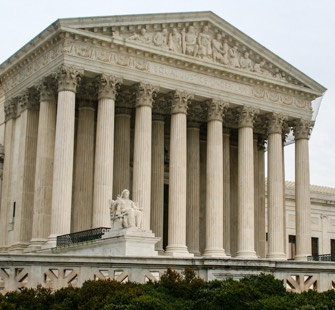SCOTUS takes Samsung appeal in Apple design patent infringement case
 On Monday, March 21, 2016, the United States Supreme Court agreed to hear the matter of Samsung Electronics v. Apple, Inc., a dispute between two giant technology companies that at its core relates to how much Samsung owes Apple for infringing certain design patents.
On Monday, March 21, 2016, the United States Supreme Court agreed to hear the matter of Samsung Electronics v. Apple, Inc., a dispute between two giant technology companies that at its core relates to how much Samsung owes Apple for infringing certain design patents.
So far, these two technology giants have shown little interest in playing nice. A jury found that Samsung infringed Apple design patents, Apple utility patents and also diluted Apple’s trade dresses. The infringed design patents are U.S. Design Patent Nos. D618,677 (“D’677 patent”), D593,087 (“D’087 patent”), and D604,305 (“D’305 patent”), which claim certain design elements embodied in Apple’s iPhone. The infringed utility patents are U.S. Patent Nos. 7,469,381 (“’381 patent”), 7,844,915 (“’915 patent”), and 7,864,163 (“’163 patent”), which claim certain features in the iPhone’s user interface. The diluted trade dresses are Trademark Registration No. 3,470,983 (“’983 trade dress”) and an unregistered trade dress defined in terms of certain elements in the configuration of the iPhone.
Contemporary Issues in Patent Royalty Damages
Written by our friends at Kilpatrick Stockton, E. Danielle Thompson Williams and Leslie T. Grab, Ph.D..
 TMI: How Much Settlement Information is Too Much Settlement Information?
TMI: How Much Settlement Information is Too Much Settlement Information?
“Upon finding for the claimant the court shall award the claimant damages adequate to compensate for the infringement, but in no event less than a reasonable royalty.”[1] Damages are a hotly contested issue in nearly every patent litigation. Patentees have traditionally had three remedies available to compensate for patent infringement: lost profits; an established royalty; or a reasonable royalty. Each of the remedies considered unique information on which a patentee could rely in establishing a damages award. When requesting a reasonable royalty, patentees also often relied on the entire market value rule as another tool to determine the amount of the damages award. However, a recent string of cases has changed the methodologies for determining a reasonable royalty as well as the standard for using the entire market value rule. These cases put both the district courts and patent litigants on notice that the standards for establishing damages have been tightened. Patentees must now “carefully tie proof of damages to the claimed invention’s footprint in the marketplace.”[2] These decisions have benefits and risks for both plaintiffs and defendants in litigation that include both settlement strategies as well as expert testimony. (more…)
10.13.10 | Federal Circuit Cases, Patent Damages, Patent Issues, Patent Litigation, posts | Stefanie Levine


No Comments
04.4.16 | patent infringement, Patent Issues, Patent Litigation, Supreme Court Cases | Gene Quinn